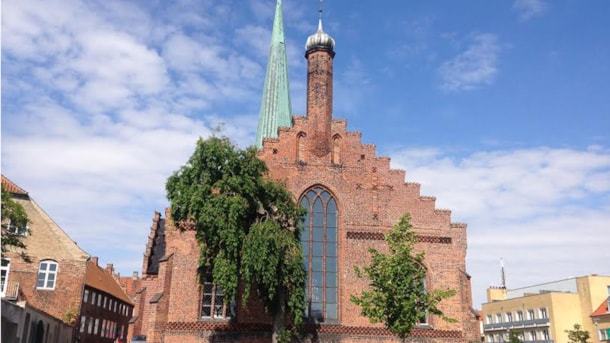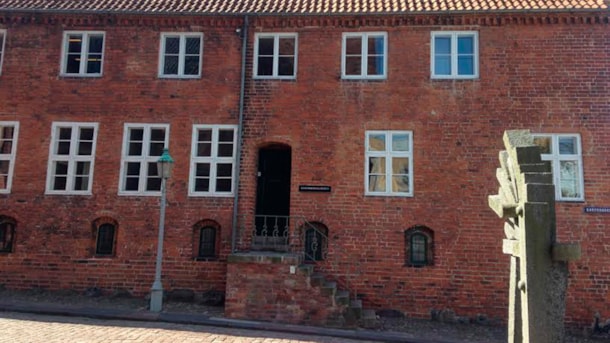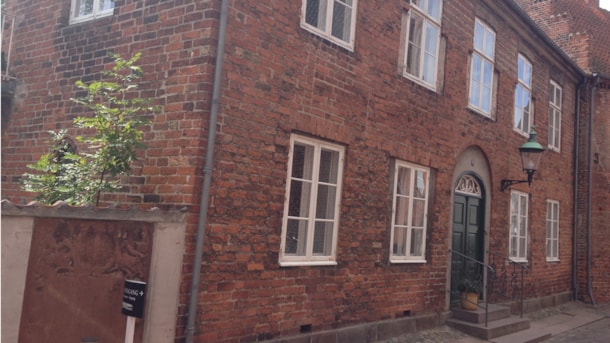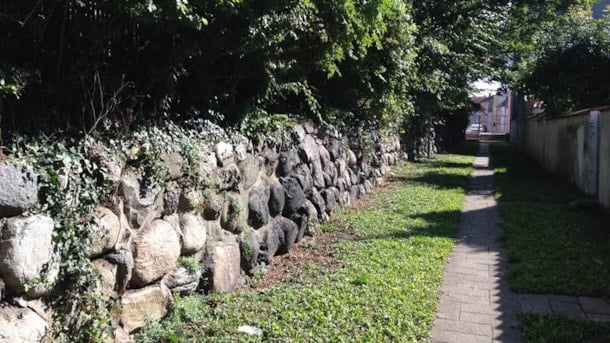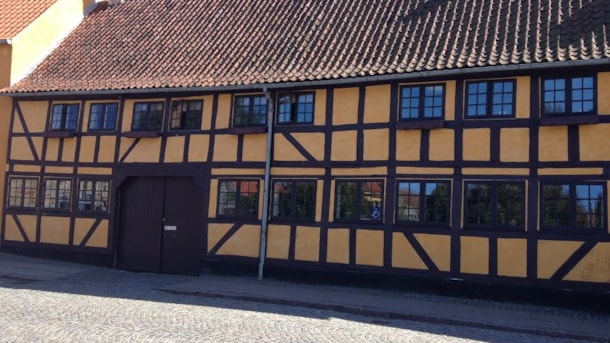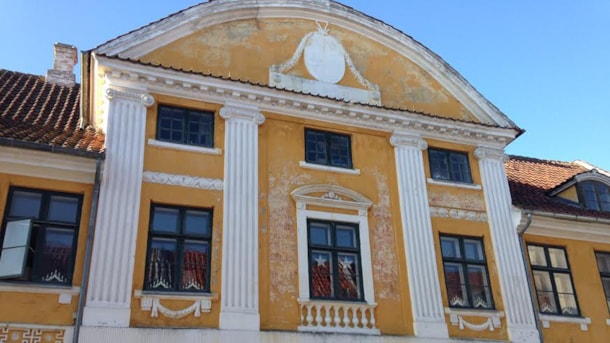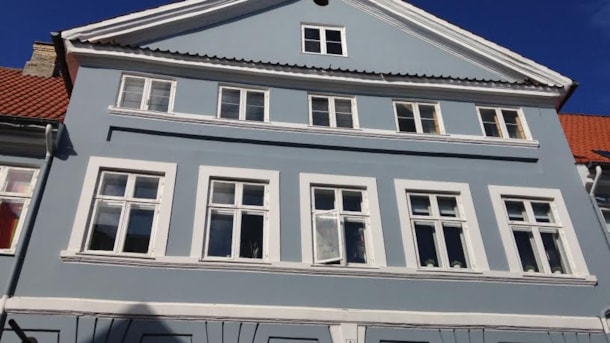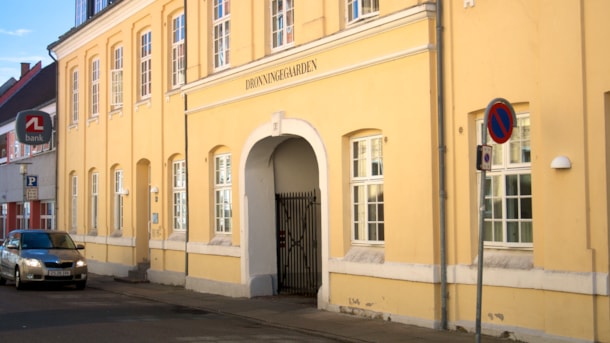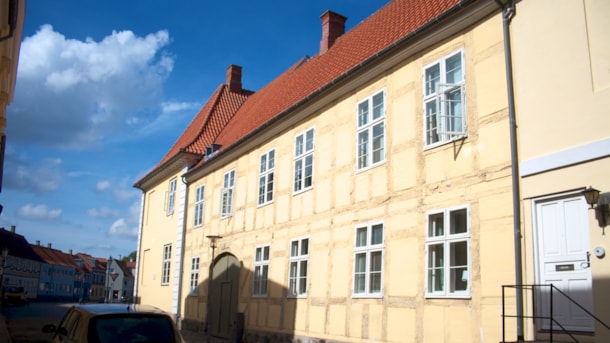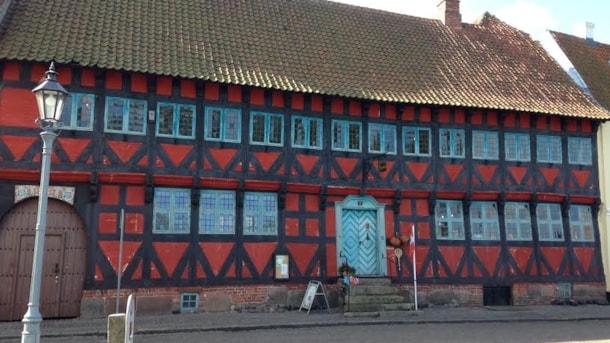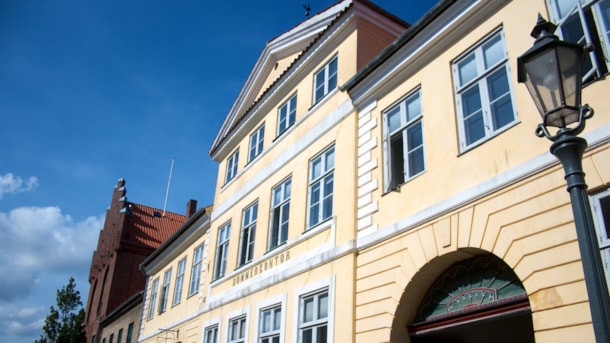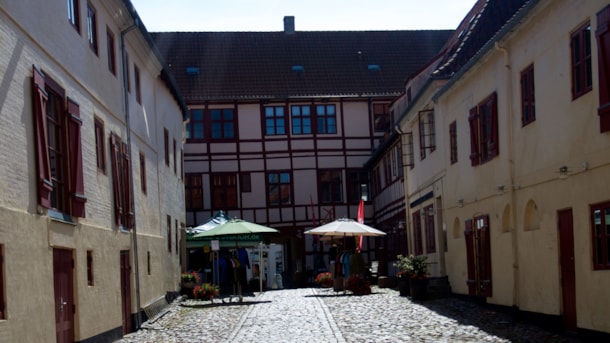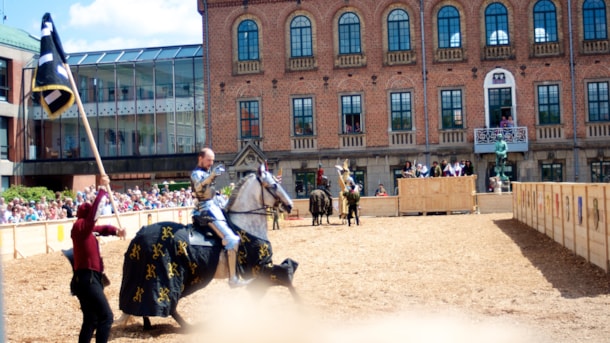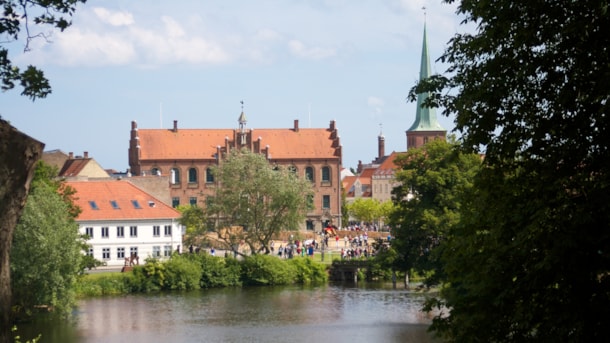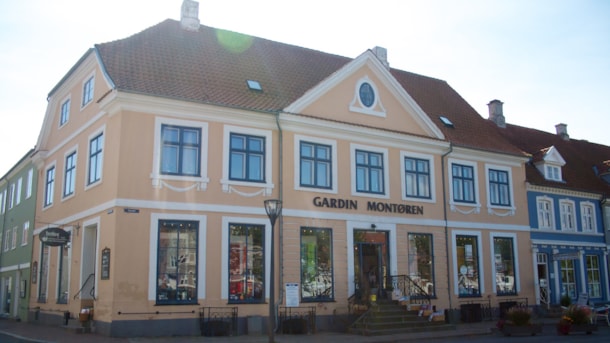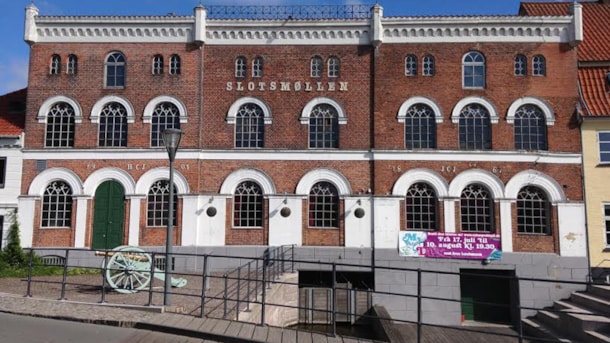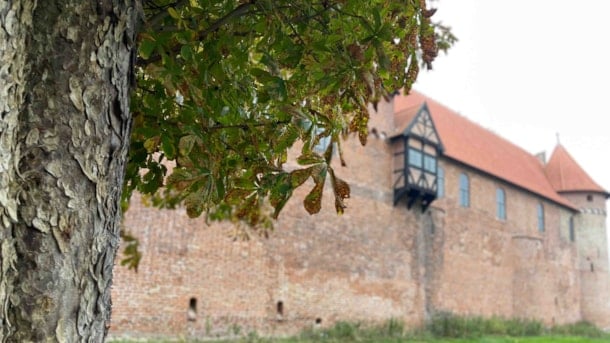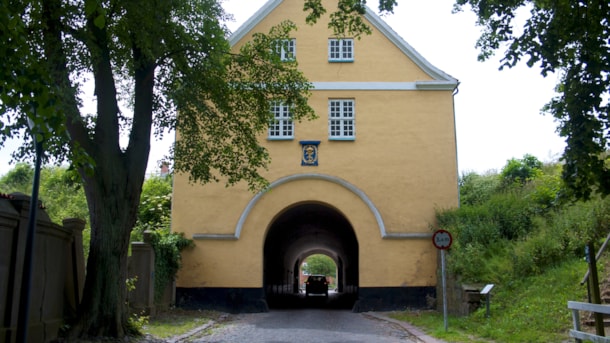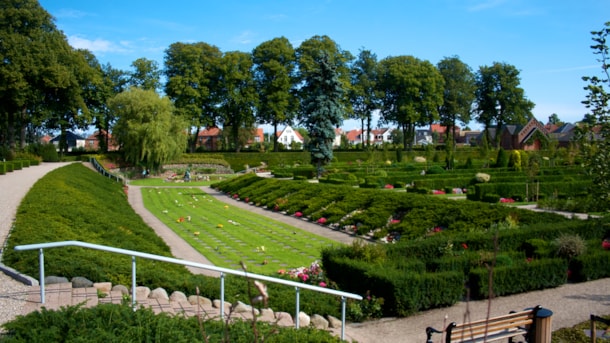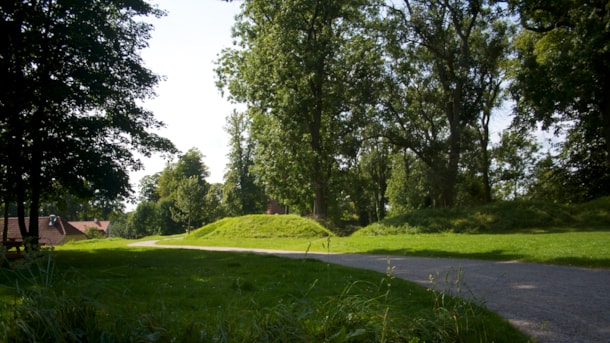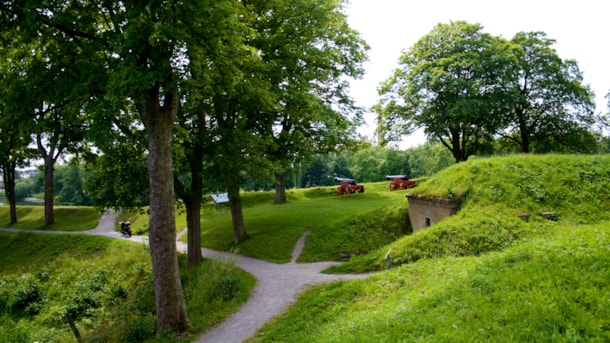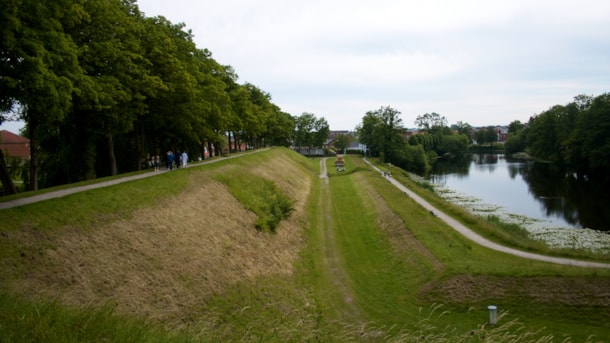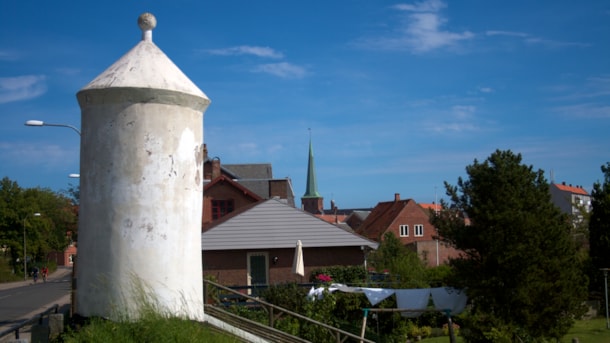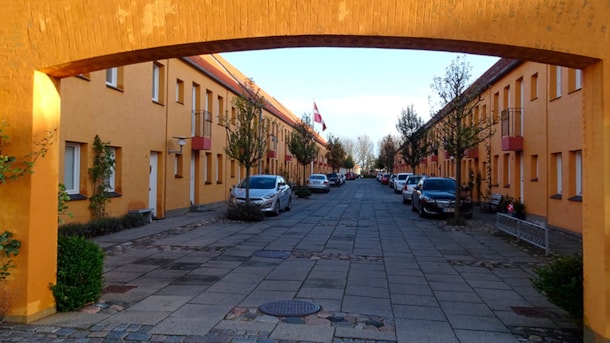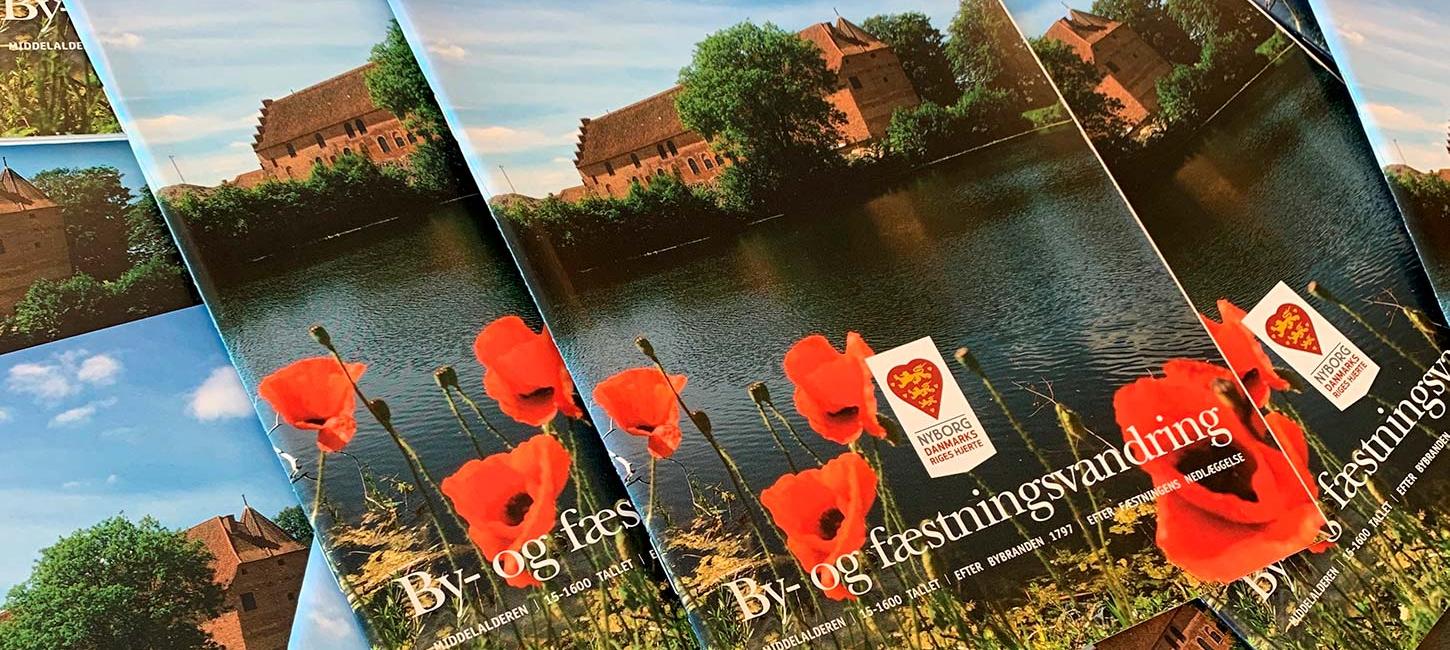
Town and Fortress - a Walkers guide
Welcome to a walk in the fortress town of Nyborg from the Middle Ages to the Present day.
Welcome to Nyborg, the fortified royal town of the Danehof Assemblies.
Besides the modern town, with ist bustling commercial and café life, many intrifuing factes of life in bygone days present themselves. The aim of this guide is to introduce the visitor to the sights of Nyborg and to its fascinating history.
Have a good time!
If you would rather have the guide as a leaflet, you can buy it at VisitNyborg.
The Church
1 The Church
Nyborg’s Church of Our Lady was built by Margrete I (1376–1412) in 1389. According to a priest’s account from the 1630s, it was built to mark the military victory over the Swedish king...
Korsbrødregården in Nyborg
2 Korsbrødregården
Unlike many other market towns in medieval Denmark Nyborg never had a monastery. The town, however, had a foundation of the Korsbrødre (whose monks wore black robes with a white c...
The vicarage in Nyborg
3 The vicarage
Nyborg’s other medieval house is the vicarage, adjacent to Korsbrødregården. Today the house’s long side faces the street, but when it was built in around 1400 it lay with the gable t...
The medieval Fortress and "The Town Wall" in Nyborg
4 "The Town Wall" and the Medieval Fortress
In this section of the town there is a 110-metre long wall of large stones. It is in places two metres high and is thought to be part of the town wall tha...
Garvergården in Nyborg
5 Gavergården, Skippergade 26
This large, halftimbered house was presumably built in the 18th century. It has contained many activities, among them tanneries – hence the name (‘garveri’ is Danish for...
Anders Draghes Gaard in Nyborg
6 Anders Draghes Gaard, Kongegade 24
This early house was at one time owned by Anders Draghe – hence its name. In 1483 he sold it to King Hans’ Queen Christine. The fine front building in two
storey...
Jakob Enckes Gård in Nyborg
7 Jakob Enckes Gård, Kongegade 12
This magnificent house was erected by the local master builder Johan Jakob Encke for his own use. It was probably built soon after the fire of 1797, and its exterio...
Den Rosenvinske Gård in Nyborg
8 Den Rosenvinske Gård, Korsgade 4
This house is another of Johan Jakob Encke’s creations, built after the fire of 1797. Its top ends with a frontispiece and a roof cornice. This cornice is typical ...
Dronningegården in Nyborg
9 Dronningegården, Kongegade 2
During the "Count´s Feud" this house, also called Amtstuen or "Treasury", was owned by Mayor Rasmus Rostokker, who, however, fled after the war. King Christian III the...
Gyldencrones Palæ in Nyborg
10 Gyldencrones Palæ, Kongegade 1
This mansion was first built in the 17th century. It was partly damaged by the fire and about 1800 was given a Classicist facade.
Unlike other houses of this type,...
11 Borgmestergården in Nyborg
11 Borgmestergården, Slotsgade 11
The red-painted merchant’s and mayor’s house was one of the few buildings to survive the fire in 1797. It is possible that an older house stood here, but the wing fa...
Rasmus Møllers Gård in Nyborg
12 Rasmus Møllers Gård, Nørregade 1
Rasmus Møller was an enterprising and later a very rich merchant. He was the son of a miller from Rønninge, but came to live in the house of Hans Nielsen, who taug...
Frederik Nielsens Gård in Nyborg
13 Frederik Nielsens Gård, Nørregade 5
This is a 12-metre long Classicist building in two storeys, with ornamentation of lions’ heads beneath the windows of the first floor. The builder is unknown, ...
The Town Hall Square in Nyborg
14 The Town Hall Square
In 1537 Christian III purchased some small houses in the upper part of Nørregade and had the area as far as the castle mill cleared. Thus was the square created, which the ki...
The Town Hall in Nyborg
15 The Town Hall
The town hall was erected on the eastern side of the square in 1586. There is, however, very little left of this structure – just some brickwork at the rear of the present town hall...
Kalentegården in Nyborg
16 Kalentegården, Torvet 3
This site was occupied by the mansion of the “Great Kalente Guild”, a Catholic Brotherhood. It was built by the church in the first half of the 15th century. After the Ref...
The Castle Mill in Nyborg
17 The Castle Mill
In the middle of the 16th century Christian III moved a nearby mill to the site on the square. Corn was ground there and a steam engine was installed in 1867. The mill ceased work...
19 The Castle in Nyborg
19 The Castle
According to later sources, Nyborg Castle was founded in the 1170s by Knud Prislavsen, the nephew of King Valdemar I of Denmark. By 1193 at the latest, when the oldest source mentions ...
20 The Town Gate in Nyborg
20 Landporten (The Town Gate)
Landporten dates back to Christian III’s major construction work in the mid16th century. The Town Gate assumed its present form in 1666 under King Frederik III. With it...
The Ravelin in Nyborg
21 The Ravelin
Opposite Lindeallé, on the other side of Vestergade and in the present churchyard, traces may be seen of the ravelin that protected the entrance to the Town Gate. At the time travelle...
The Crown Prince's Bastion in Nyborg
22 The Crown Prince's Bastion
Like the two other large bastions this was part of the fortress installations from the 1660s, and is still fairly well preserved. It contained the military drill square...
The Queen´s Bastion and Powder Magazine in Nyborg
23 The Queen's Bastion and Powder Magazine
The Queen’s Bastion and the rampart up to the King’s Bastion and the Crown Prince’s Bastion is the best preserved section of the fortress. At the tip of th...
The King's Bastion in Nyborg
24 The King's Bastion
This was one of the three large bastions on the corners of the fortress. It was virtually demolished after the fortress was closed down, and only the name remains. It is presum...
The Embankment and the "White Virgin" in Nyborg
25 The Embankment and the "White Virgin"
The King’s Bastion originally faced Nyborg Fjord. From its site the moat water could flow into the fjord, in which case the moat would run dry and could then...
Town Redevelopment in Nyborg
26 Town Redevelopment
Nyborg’s town redevelopment programme in the 1970s enabled the areas behind the houses in the streets Skippergade, Østervoldgade and Nyenstad to be cleared. Here lay many old r...
